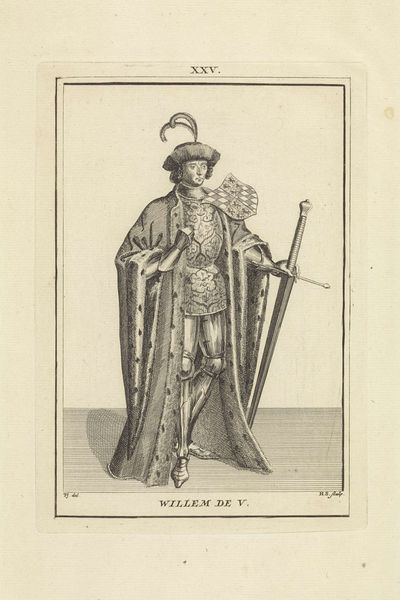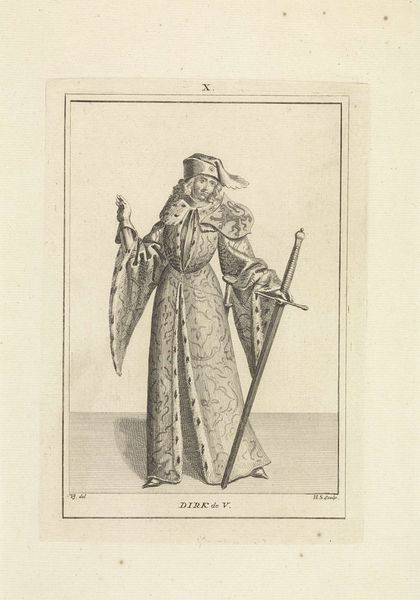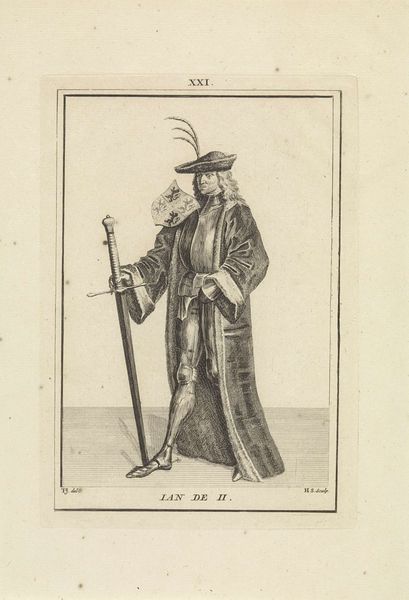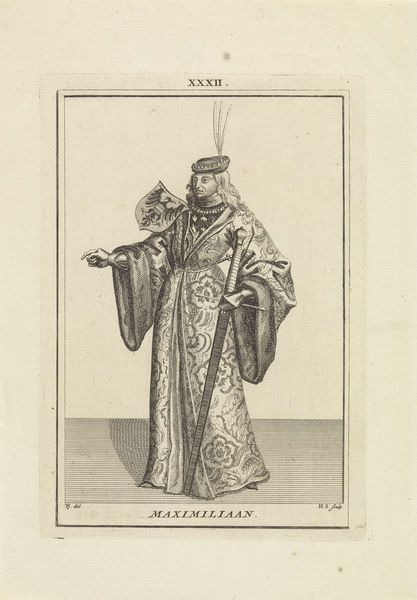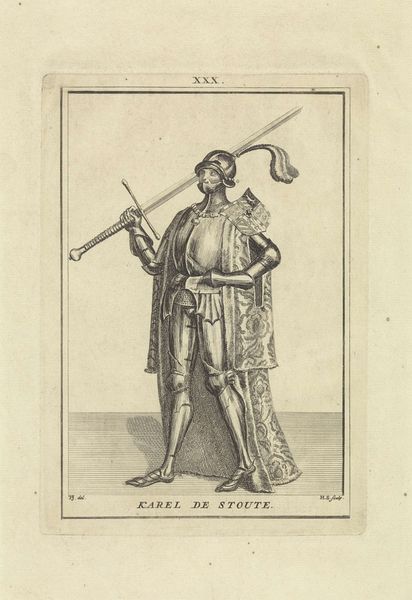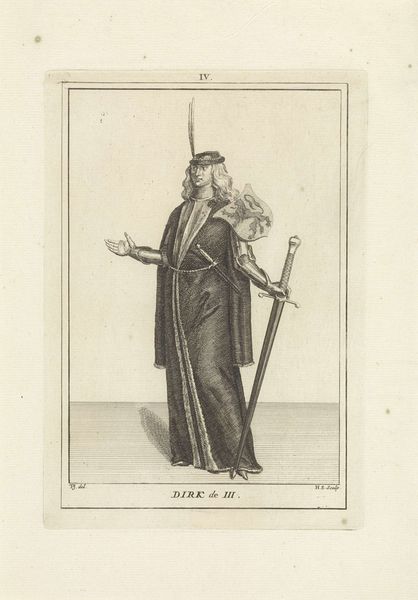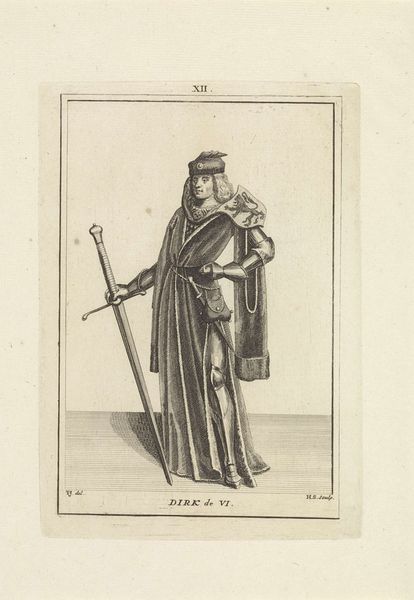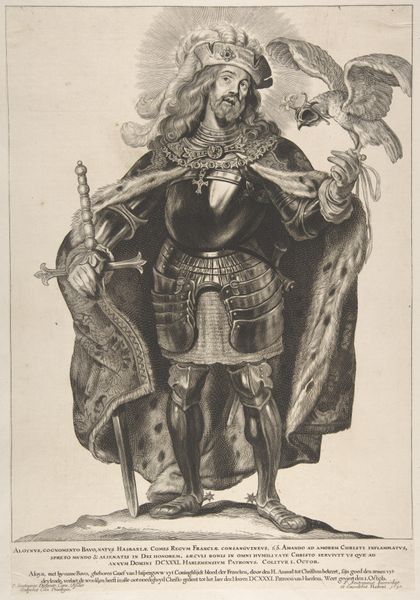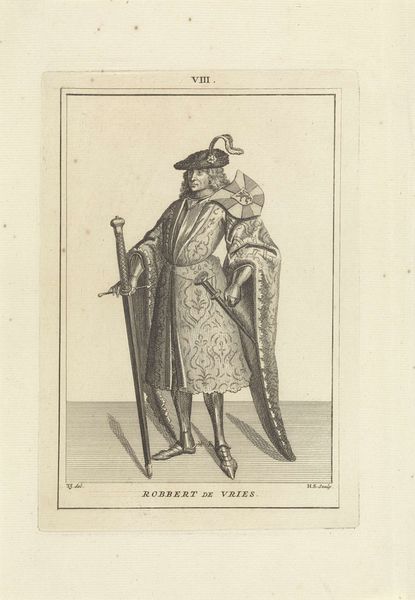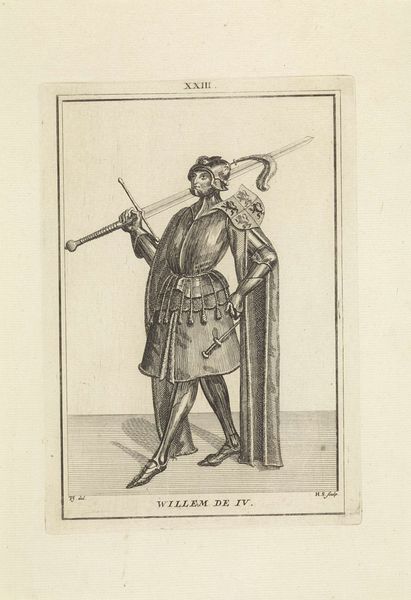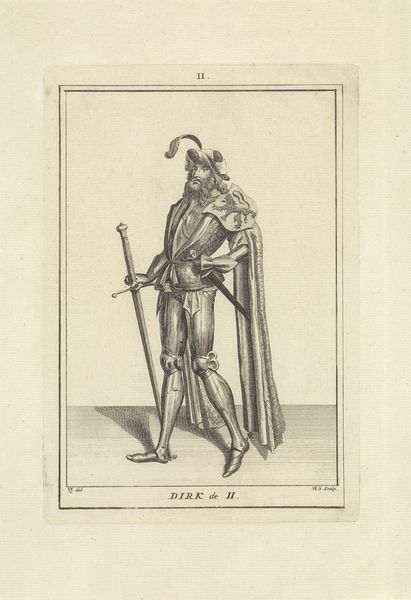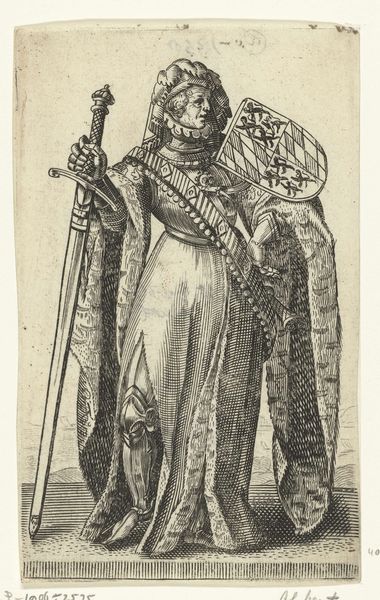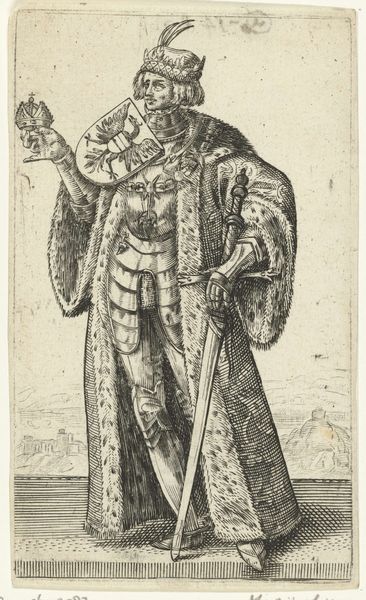
engraving
#
portrait
#
baroque
#
old engraving style
#
genre-painting
#
history-painting
#
engraving
Dimensions: height 192 mm, width 135 mm
Copyright: Rijks Museum: Open Domain
Editor: This is "Portret van Floris III, graaf van Holland," made in 1745 by Hendrik Spilman, using engraving. It feels incredibly formal and a little theatrical, like it's meant to project power. What's your read on this portrait? Curator: Well, as a historian, I see this more as a representation of power *through* theatre. It’s not just Floris III but a construction of Floris III meant for public consumption. Consider the context: it’s 1745, well after Floris III actually lived. The choice of engraving suggests wide distribution. Do you see this as objective documentation or something else? Editor: I see what you mean. It feels less about historical accuracy and more about solidifying a specific image, almost propaganda. The very detailed clothing and the prominent display of arms support this idea. Curator: Exactly. And notice how he's framed? The portrait is meant to create and perpetuate a very specific narrative of Dutch nobility and power. Think about who might have commissioned this and why. Whose interests are being served here? It also represents power beyond his time. Editor: It seems like a statement, ensuring his place in the grand narrative of Holland, rather than just a record. Curator: Precisely. And where is this piece now housed? Editor: The Rijksmuseum. Curator: Which itself is a significant institution that shapes how we understand Dutch history and art. Its presence there continues to contribute to that narrative. This was really informative, thinking about how these pieces come to be and how institutions help craft them in people's mind. Editor: Yes, me too! I see it so differently now, thank you.
Comments
No comments
Be the first to comment and join the conversation on the ultimate creative platform.
